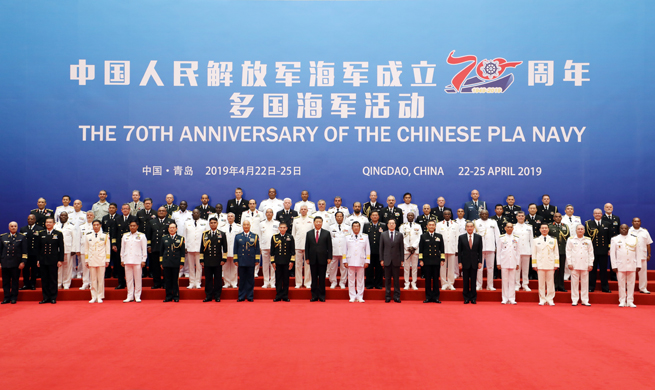CHICAGO, April 23 (Xinhua) -- A study by researchers at the University of Michigan (UM) found that meal kits have a much lower overall carbon footprint than the same meals purchased at a grocery store, despite having more packaging.
The researchers assessed relative greenhouse gas emissions of meal kits compared with grocery store meals by sourcing and preparing the recipes for five two-person meals, salmon, cheeseburger, chicken, pasta and salad, from both a meal kit service and a grocery store.
They then estimated Greenhouse gas emissions for every major step in the lifetime of the food ingredients and the packaging: agricultural production, packaging production, distribution, supply chain losses, consumption and waste generation.
The researchers found that the emissions tied to the average grocery store meal were 2 kilograms carbon dioxide equivalent emissions per meal (CO2e/meal) higher than an equivalent meal kit. The average emissions were calculated to be 6.1 kg CO2e/meal for a meal kit and 8.1 kg CO2e/meal for a grocery store meal, a 33 percent difference.
Median grocery meal emissions exceeded the median meal kit emissions for four of the five meal types, namely salmon, chicken, pasta and salad.
Emissions differences between meal kits and store-bought meals were influenced by three main factors: food waste, packaging and the supply-chain structure, which includes transportation logistics.
Emissions tied to household food waste from grocery meals exceeded those for meal kits for all five meals. The difference was attributed to meal kits pre-portioning ingredients, leaving fewer ingredients that are later wasted.
Generally speaking, meal kits contain large amounts of packaging but less food per meal due to pre-portioning. Grocery meals have less packaging per meal, but larger quantities of food must be purchased, leading to higher household food waste.
"Even though it may seem like that pile of cardboard generated from a Blue Apron or Hello Fresh subscription is incredibly bad for the environment, that extra chicken breast bought from the grocery store that gets freezer-burned and finally gets thrown out is much worse, because of all the energy and materials that had to go into producing that chicken breast in the first place," said Shelie Miller, senior author of the study with the UM Center for Sustainable Systems in the School for Environment and Sustainability.
Meal kits and grocery meals also exhibit radically different supply chain structures that influence their greenhouse gas emissions.
By skipping brick-and-mortar retailing altogether, the direct-to-consumer meal kit model avoids the food losses that commonly occur in grocery stores, resulting in large emissions savings.
Meal kits rely on delivery trucks. Since each meal kit is just one of many packages delivered on a truck route, it is associated with a small fraction of the total vehicle emissions. Grocery store meals, in contrast, typically require a personal vehicle trip to the store and back.
The study found that last-mile emissions accounted for 11 percent of the average grocery meal emissions compared to 4 percent for meal kit dinners.
In the study, the largest emissions source, for both meal kits and grocery store meals, was food production: 59 percent of meal kit emissions and 47 percent of grocery meal emissions were tied to agricultural production. Meals with the largest environmental impact either contained red meat or were associated with large amounts of wasted food.
Annual U.S. meal kit sales reached an estimated 3.1 billion dollars in 2018 with a growth rate of nearly 22 percent, according to the Packaged Facts research firm. In a 2018 Nielsen survey, 9 percent of U.S. consumers surveyed said they had purchased a meal kit, while 25 percent of respondents said they would consider trying a meal kit in the next six months.
The study is published on Tuesday in the journal Resources, Conservation and Recycling.












